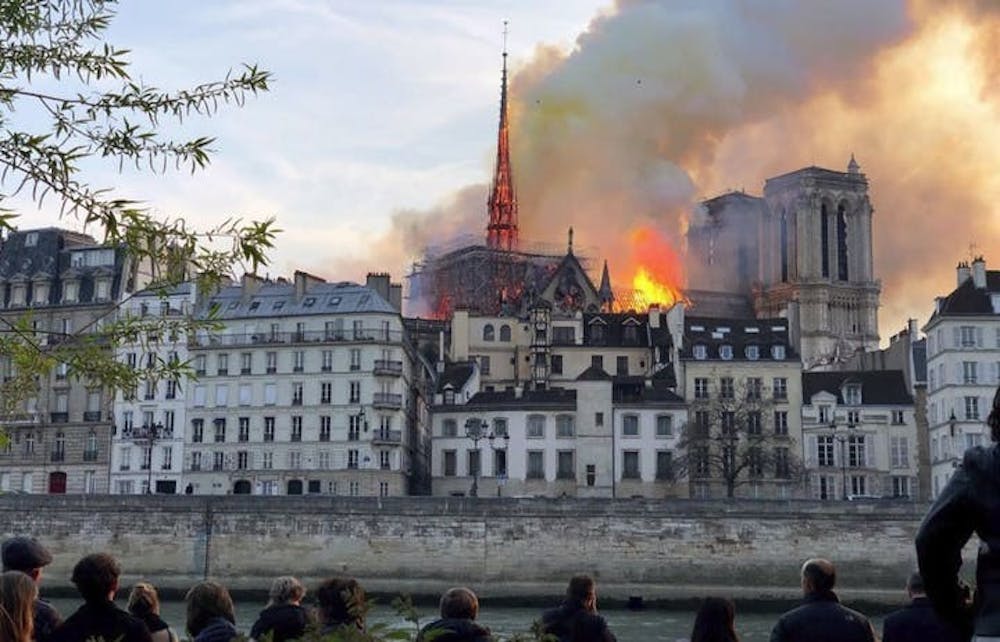
Elena Stidham is a junior journalism and telecommunications major and writes “Loud and Clear” for The Daily News. Her views do not necessarily agree with those of the newspaper. Write to Elena at emstidham@bsu.edu.
“Like fire. Hellfire.”
These lyrics from the song “Hellfire” from the movie “The Hunchback of Notre Dame” were scorched into my brain the moment I found out the Notre Dame Cathedral in Paris, France was burning.
Although the fire has since burned out after 12 long hours, almost a thousand years of history and culture were devoured in the flames. On Holy Week, no less.
It’s tragedies like these that remind us how we don’t have to believe in hell — or heaven for that matter — in order for it to be real. It’s casualties like the burning of the Notre Dame Cathedral that tear us apart from the inside, and all that remains is the burning hellfire that tore history apart to begin with.
As of right now, police are unsure of what exactly caused the fire, but it’s thought to be an accident caused by renovation work, according to the Associated Press. All the artwork inside and the two main bell towers have thankfully been saved, but the spire has fallen, and the iconic rose glass windows are gone to the flames.
I’m absolutely devastated, but I’m not the only person in the world that wept for history as I watch the cathedral burn. It’s one of those events I never thought I would see happen within my lifetime.
The construction of Notre Dame started in 1163, and it was finished in 1345. Victor Hugo, the author of “The Hunchback of Notre Dame” and “Les Miserables,” claimed the cathedral to be a “gothic delicacy,” and it has been considered an icon for gothic architecture, European art and culture.
To this day, it is a symbol of art and culture not just for France, but for the entire world. It’s not only a work of art either. It’s a testament of time. It’s a symbol of hope and what we, as humans, can survive.
Notre Dame Cathedral survived the French Revolution, the Napoleonic Wars and World War II. Notre Dame has held itself paramount despite countless other worldwide tragedies, so to see it burn is nothing short of purely devastating.
The world has come together to mourn the partial loss of this 800-year-old relic. A video surfaced on Twitter showing hundreds, if not thousands, of French citizens gathered in front of the Cathedral singing “Ave Maria” as it burned. Needless to say, I sobbed.
Notre Dame was rebuilt in the early 1800s after Victor Hugo wrote “The Hunchback of Notre Dame,” painting the decrepit cathedral as the setting of his story. It can be rebuilt again, but think about when you were a child, and you broke a toy. It could be fixed or replaced, but it was never the same. The toy lost so much of its original history, so much of that wonderful wear and tear that made it so personal to you in the first place.
This is exactly what Notre Dame has lost to this fire.
This is a disastrous reminder that we’re all just history; we’re all only temporary. Anything and everything we destroy or create never holds a permanent mark in the grand scheme of the world.
Yet, through the ash remains two towers and all the artwork saved from once before. Just as we will save Notre Dame again, the world will still weep on all that had been burned and left behind.





